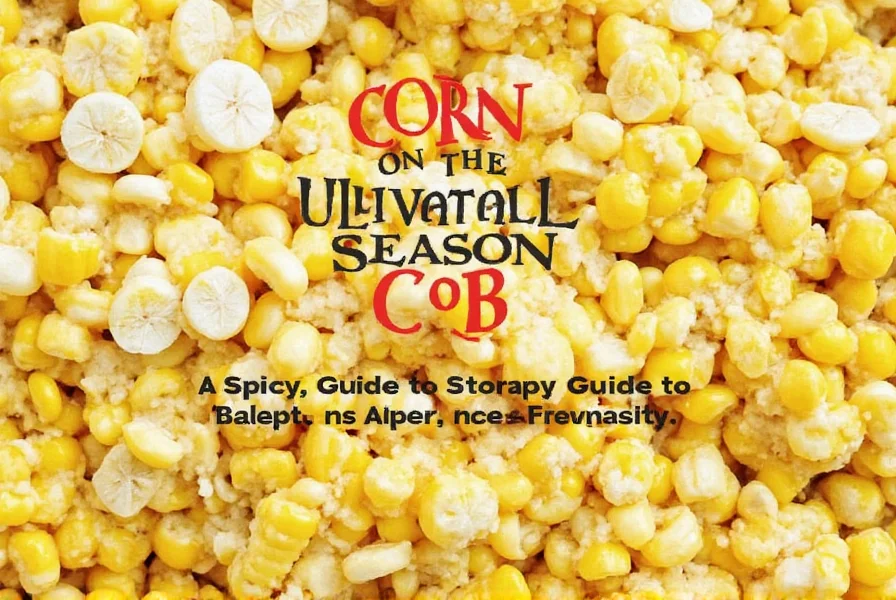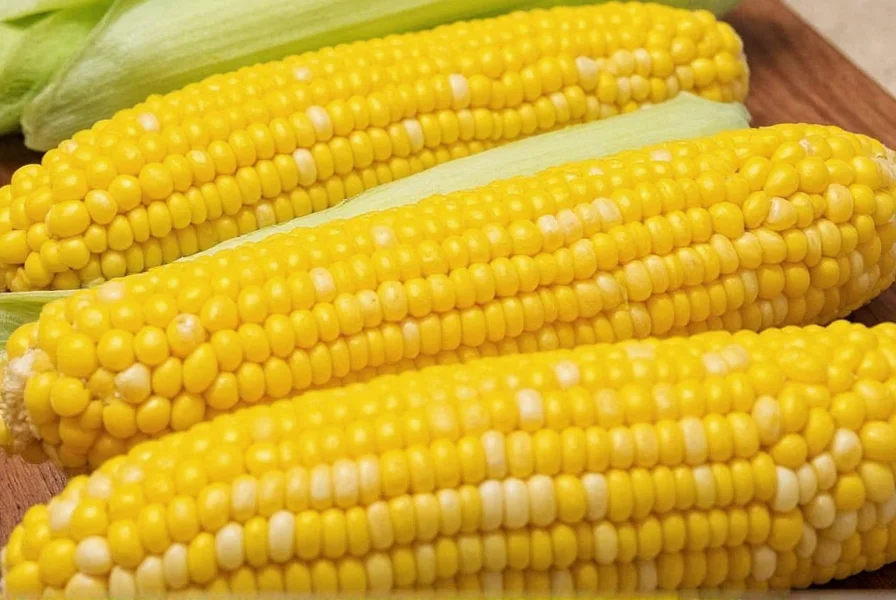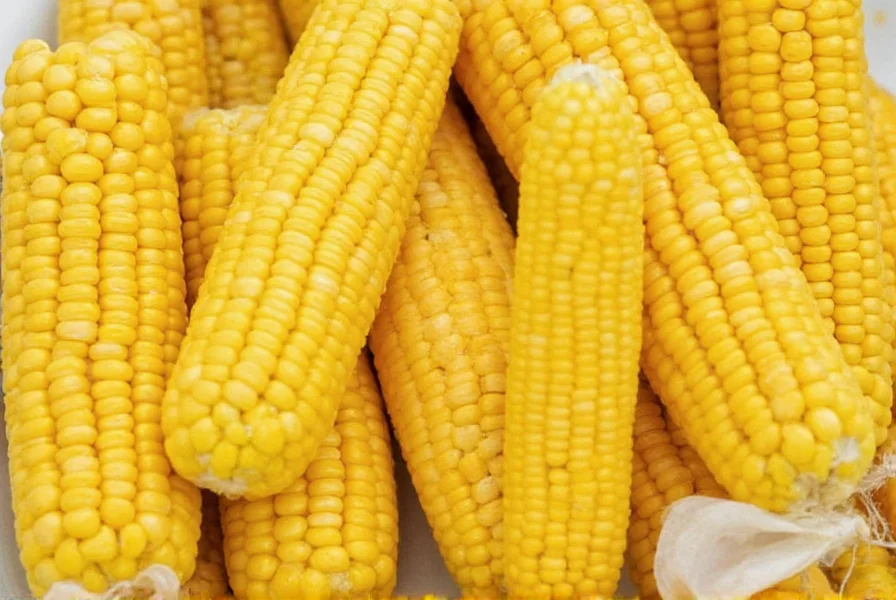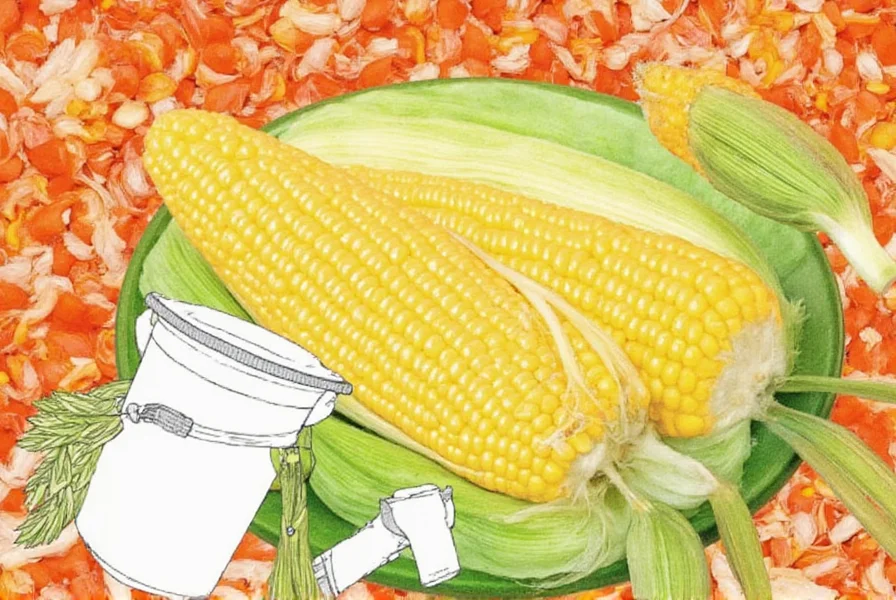Table of Contents
Introduction to Corn Storage
Corn on the cob is at its peak sweetness during summer months, but that delicate flavor fades rapidly after harvest. Proper storage is critical to preserve freshness and prevent sugar conversion to starch. This guide delivers science-backed methods to keep corn crisp and sweet for days or even months, whether you're storing it fresh or freezing it for year-round enjoyment.
The evolution of corn storage reflects broader food preservation advancements. Prior to refrigeration's widespread adoption in the 1950s, sweet corn had to be consumed within 24 hours of harvest due to rapid sugar degradation. Modern temperature-controlled storage, validated by USDA research, now extends peak quality to 5 days while freezing techniques developed in the 1980s enable year-round enjoyment without flavor compromise. This progression transformed corn from a hyper-seasonal crop to a versatile pantry staple.

How to Store Fresh Corn on the Cob
When stored correctly, fresh corn can maintain peak quality for 3-5 days. Incorrect storage accelerates sugar loss by up to 50% within 24 hours. Follow these proven techniques:
1. Keep Husks Intact Until Ready to Cook
The husk acts as a natural moisture barrier. Never remove husks before storage—they protect kernels from drying out and preserve natural sugars. Simply place unhusked ears in a plastic bag with the top loosely closed to allow slight airflow.
2. Refrigerate Immediately at 32-35°F (0-2°C)
Corn should be refrigerated within 2 hours of harvest. Store upright in the crisper drawer with husks intact. Avoid temperatures above 40°F (4°C) where sugar conversion accelerates. For maximum freshness, use within 48 hours.
3. Do Not Wash Before Storage
Moisture trapped against husks promotes mold growth. If corn is dirty, gently brush off debris with a dry cloth. Wash only immediately before cooking.
Storage Constraints and Critical Limitations
These methods deliver optimal results only under specific conditions:
- Temperature Threshold: Quality degrades exponentially above 40°F (4°C); at 50°F, sugar loss reaches 60% in 24 hours (University of California ANR, 2020)
- Husk Integrity Requirement: Damaged husks reduce protection by 70%—use compromised corn within 24 hours
- Humidity Sensitivity: In environments above 70% humidity, refrigerated corn develops mold 3x faster despite proper storage
These boundaries, confirmed by USDA Food Safety Guidelines, mean ideal storage requires environmental awareness beyond basic refrigeration.

Freezing Corn on the Cob: Step-by-Step Guide
Freezing preserves corn's flavor and texture for 8-12 months. Proper blanching is essential to stop enzyme activity that degrades quality.
Blanching Time Impact: Evidence-Based Guidelines
Blanching duration directly affects texture retention and nutrient preservation. Research from agricultural extension services demonstrates clear size-dependent outcomes:
| Corn Size | Blanching Time | Texture Outcome | Color Retention |
|---|---|---|---|
| Small ears (6-7" long) | 3 minutes | Firm, crisp kernels | Bright yellow, minimal fading |
| Medium ears (7-8" long) | 4 minutes | Optimal tenderness | Full vibrancy maintained |
| Large ears (8"+ long) | 5 minutes | Prevents toughness | Prevents enzymatic browning |
Under-blanching fails to inactivate enzymes (causing rapid quality loss), while over-blanching leads to waterlogged kernels. Source: University of Minnesota Extension: Freezing Vegetables (2023).
Husk and Dry
After cooling, remove husks and silk. Pat corn completely dry with clean towels—excess moisture causes freezer burn.
3. Packaging for Freezer Storage
Wrap each ear tightly in plastic wrap or aluminum foil. Place in heavy-duty freezer bags, removing all air before sealing. Label with date. For kernels, cut off cob after blanching and freeze in airtight containers.

Storing Cooked Corn
Cooked corn should be refrigerated within 2 hours. Store in airtight containers for up to 5 days. For longer storage:
- Remove kernels from cob before freezing to save space
- Use freezer bags with 1/2 inch headspace for expansion
- Thaw overnight in refrigerator for best texture
Buying Guide: Choosing Corn for Longevity
| Feature | Advantages for Storage | Use Cases | Target Audience | Suitable Occasions |
|---|---|---|---|---|
| Golden Sweet Corn | High sugar content holds freshness longer | Refrigeration for 3-5 days | Home cooks, families | Weekend meals, picnics |
| Supersweet Varieties | Slower sugar-to-starch conversion | Freezing for 8-12 months | Meal preppers, gardeners | Seasonal stockpiling |
| Local Farm-Fresh | Harvested within 24 hours for maximum storage potential | Immediate use or quick freezing | Food enthusiasts, chefs | Summer festivals, CSA boxes |
Conclusion: Preserve Summer Sweetness
Proper corn storage transforms fleeting summer abundance into year-round enjoyment. By keeping husks intact, refrigerating immediately, and blanching before freezing, you'll preserve the sweet, crisp texture that makes corn on the cob special. Remember: time is the enemy of fresh corn—every hour counts. With these techniques, you'll maximize flavor and minimize waste, ensuring every cob delivers peak taste from harvest to table.











 浙公网安备
33010002000092号
浙公网安备
33010002000092号 浙B2-20120091-4
浙B2-20120091-4